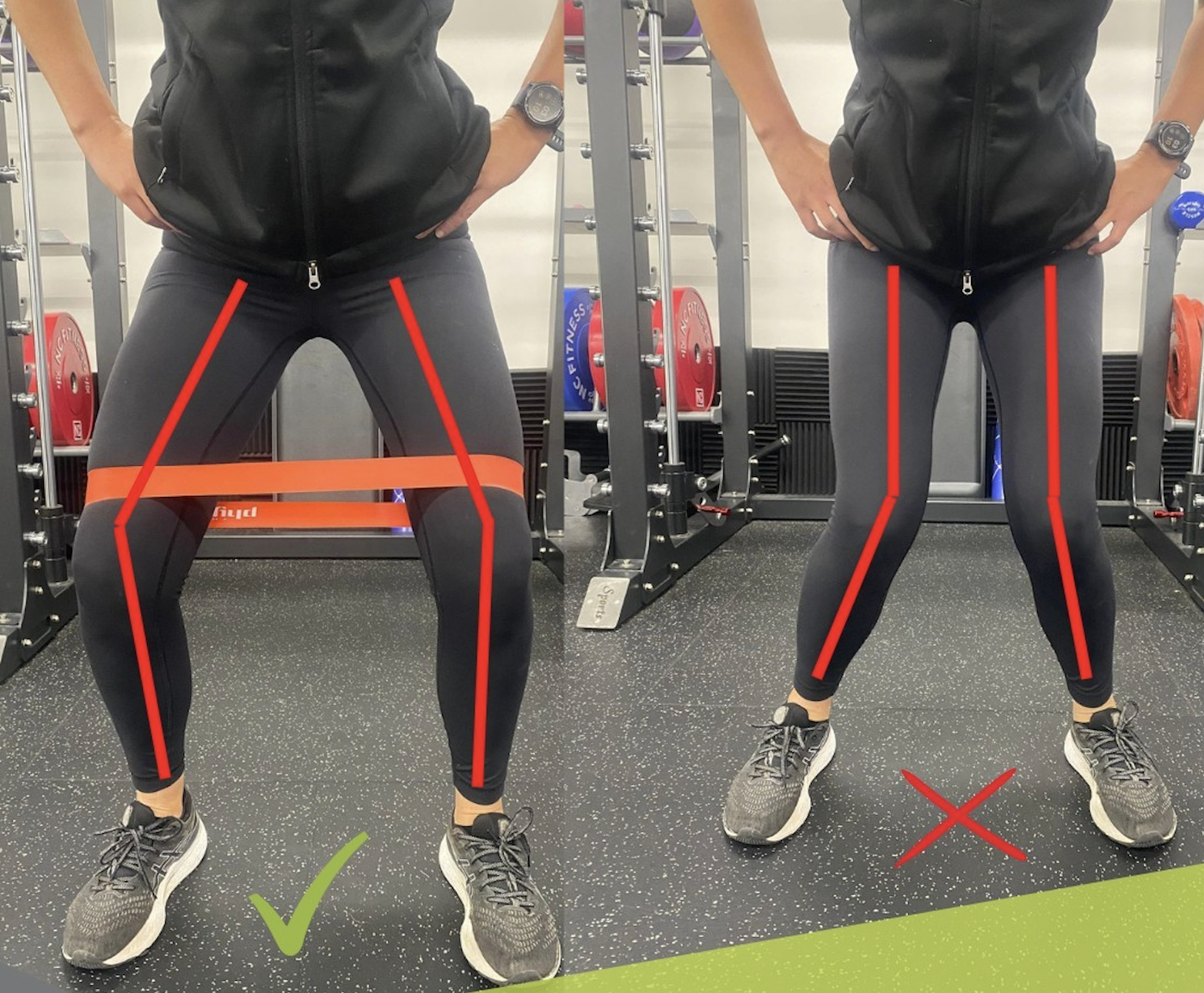Valgus Collapse of the knee: What is it and how to fix it?
Knee collapse, also known as valgus collapse, when squatting is very common.
A valgus collapse in a squat may not be due to any issues with the knee. Quite often dysfunction or some weakness in the hip, ankle or foot can leave the knee in a position where a valgus squat is the only option.
As you can see in the image the hips are internally rotated, the ankles slightly inverted and the feet pronated. A physio assessment would help to identify which of these presentations is likely impacting the rest.
Sometimes just thinking about what you need to change in movement patterns isn’t enough to achieve the change. That’s when we bring in external cues.
What is a valgus collapse?
Valgus collapse, also known as knee valgus, is a biomechanical movement pattern that occurs when the knee joint caves inward towards the midline of the body. This collapse can be observed during weight-bearing activities such as squatting, jumping, or running.
When the knee caves inward, it places excessive stress on the structures surrounding the knee joint, including ligaments, tendons, and cartilage. This faulty movement pattern is often associated with muscular imbalances, weak hip abductors (such as the gluteus medius), and tight hip adductors (inner thigh muscles).
Factors such as poor movement mechanics, inadequate strength, and improper training techniques can contribute to the development of valgus collapse. It is important to address and correct this issue as it can increase the risk of knee injuries, such as ACL tears and patellofemoral pain syndrome.
By implementing corrective exercises and engaging in strength training programs that focus on hip stability and proper alignment, individuals can work towards reducing valgus collapse and promoting optimal movement patterns for improved performance and injury prevention.
Resistance Band Around The Knees

In the image, we have placed a resistance band around the knees. This band will be creating tension to pull the knees in further.
Whilst this is not the direction we want the knees to move, the external force will give the client something to resist and push against, helping to counteract the valgus collapse and achieve a better movement pattern.
Try doing this as an activation exercise in your warm up sets before loading your squat.
Try doing this as an activation exercise in your warm up sets before loading your squat.
Happy training! 💪🏃♂️🏃♀️
Here at Physio and Fitness Clinic, we can assist you with your sports injuries. Make an appointment with a physio today.
